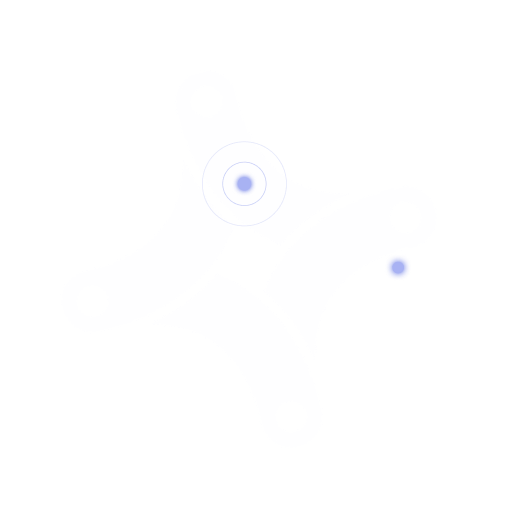Dark web scraping enables security teams to proactively identify and mitigate cyber risks by extracting valuable information from illicit threat actor communities and cybercriminal forums. By automating the process, organizations improve their security posture so they can more efficiently protect sensitive data and mitigate data breach risks.
Using Flare for Dark Web Scraping
How does Flare answer dark web scraping needs?
Flare’s platform automates time-consuming, manual dark web monitoring tasks by providing comprehensive surveillance of:
- The Onion Router (Tor) network, the traditional “dark web” that uses an overlay network to anonymize activity
- Invisible Internet Project (I2P), open-source, decentralized, anonymous network for browsing both the clear and dark web
Why is Flare’s automation better than open-source dark web scraping technologies?
Although open-source dark web scraping exists, they often come with hidden expenses, like being time-consuming or requiring specialized skills. Dark web scraping tools typically start by looking at an initial URL then collecting information from all pages under it which can create scalability, processing, storage, and analysis issues.
With Flare’s automation, security teams can rapidly scale and operationalize their dark web scraping and monitoring capabilities. Flare’s easy-to-use platform automatically provides context-rich events so that security teams can reduce their dark web investigation times by up to 95%.
What are the key benefits of Flare’s dark web scraping solution?
- Decreased investigation times with insights into dark web exposure with the ability to correlate data points from across the clear & dark web.
- Improved decision-making using artificial intelligence (AI) language models that automatically translate, summarize, and contextualize events.
- Empowering security analysts of all experience levels with threat actor analytics that include threat actor post history and tracking across dark web and various threat actor communities.
Dark Web Scraping: An Overview
What is dark web scraping?
Dark web scraping uses specialized tools called web crawlers to extract data from websites and forums located hidden from traditional search engines, like Google and Bing. These websites and forums use the Tor network, a network that uses various servers to forward and encrypt traffic so that users remain anonymous.
Dark web scraping is typically used for:
- Cyber threat intelligence monitoring: uncovering cyber threats by looking for information about the company being exchanged in cybercriminal forums
- Investigating criminal activity: looking for information about illegal activities, like ransomware sales and credential sales
What are the differences between dark web scraping and deep web scraping?
Although dark and deep web scraping provide insights, they review different types on internet information:
- Dark web: extracting data from parts of the internet intentionally hidden, typically requiring specialized tools and skills to monitor illegal activities.
- Deep web: accessing unindexed websites and database not visibility through traditional search engines, like subscription-based or gated content
What are tools and technologies for dark web scraping?
Some open-source tools for scraping the dark web include:
- TORBOT: python-based tool that extracts page titles, sit addresses, and brief descriptions
- Dark scrap: tool for locating and extracting downloadable media within Tor websites
- Fresh Onions: tool with Elasticsearch capabilities to uncover hidden services
- Tor Crawl: tool to navigate and extract code from Tor services
- OnionScan: tool to help security analysts identify monitor and track dark web sites
While these tools can extract data, the information they provide often lacks context, requiring security teams to engage in manual analysis.
Why Do You Need Dark Web Scraping in Today’s Cybersecurity Landscape?
What are the benefits of dark web scraping?
In a world where business operations rely on the internet, dark web scraping tools enable security teams to monitor for and respond to data leaks by scanning for sensitive information. Some key benefits include:
- Proactive detection: identifying potential data breaches or leaks by monitoring for sensitive data, like source code or user credentials
- Fraud detection: detecting customer or employee personally identifiable information (PII) that malicious actors can use to perpetrate fraud and identity theft
- Data-driven decision making: gaining insights into threat actor targets and cybercriminal activities as part of digital risk management
What are the challenges of dark web scraping?
While organizations can build proactive rather reactive security programs with dark web scraping, many face challenges to operationalizing these activities. Some key challenges include:
- Specialized tools: Identifying the unlinked URLs for dark web forums and websites can require extensive research and experience with specialized tools.
- Forum protections: Many dark web forums and websites require a password so researchers need to create anonymous accounts to gain access to these resources.
- Hours of operation: Some websites and forums operate with limited hours, making it difficult for teams to scrape them and extract insights consistently.
- Time consuming: Gaining insights from dark web scraping can be time-consuming, meaning teams either need a member dedicated to the analysis or engage in ad hoc activities.
- Incompleteness: Threat actors increasingly use technologies outside the traditional dark web, like illicit Telegram channels, that leave organizations with an incomplete picture of risk.
What are best practices for conducting dark web scraping?
To gain meaningful insights from the dark web that enhance an organization’s security posture, some best practices include:
- Automating processes: Finding solutions that automate manual processes as much as possible gives teams the information and insights necessary to focus on other, more critical security activities.
- Adhering to legal and ethical guidelines: Data extracted from the dark web can contain sensitive PII or intellectual property, so organizations should take the appropriate steps to protect it.
- Maintaining anonymity: Security researchers should protect themselves from potential threat actor retaliation and use tools that maintain their anonymity.
- Integrating with cybersecurity tools: To optimize dark web scraping’s value, organizations should integrate this data into its security alerting tools, like security incident and event management (SIEM) platforms.
Dark Web Scraping and Flare
Flare provides the leading Threat Exposure Management (TEM) solution for organizations. Our technology constantly scans the online world, including the clear & dark web, to discover unknown events, automatically prioritize risks, and deliver actionable intelligence you can use instantly to improve security. Flare’s solution enables security teams to go beyond dark web scraping by automatically collecting, analyzing, structuring, and contextualizing data from diverse sources.
Our solution integrates into your security program in 30 minutes to provide your team with actionable intelligence and automated remediation for high-risk exposure. See it yourself with our free trial.


